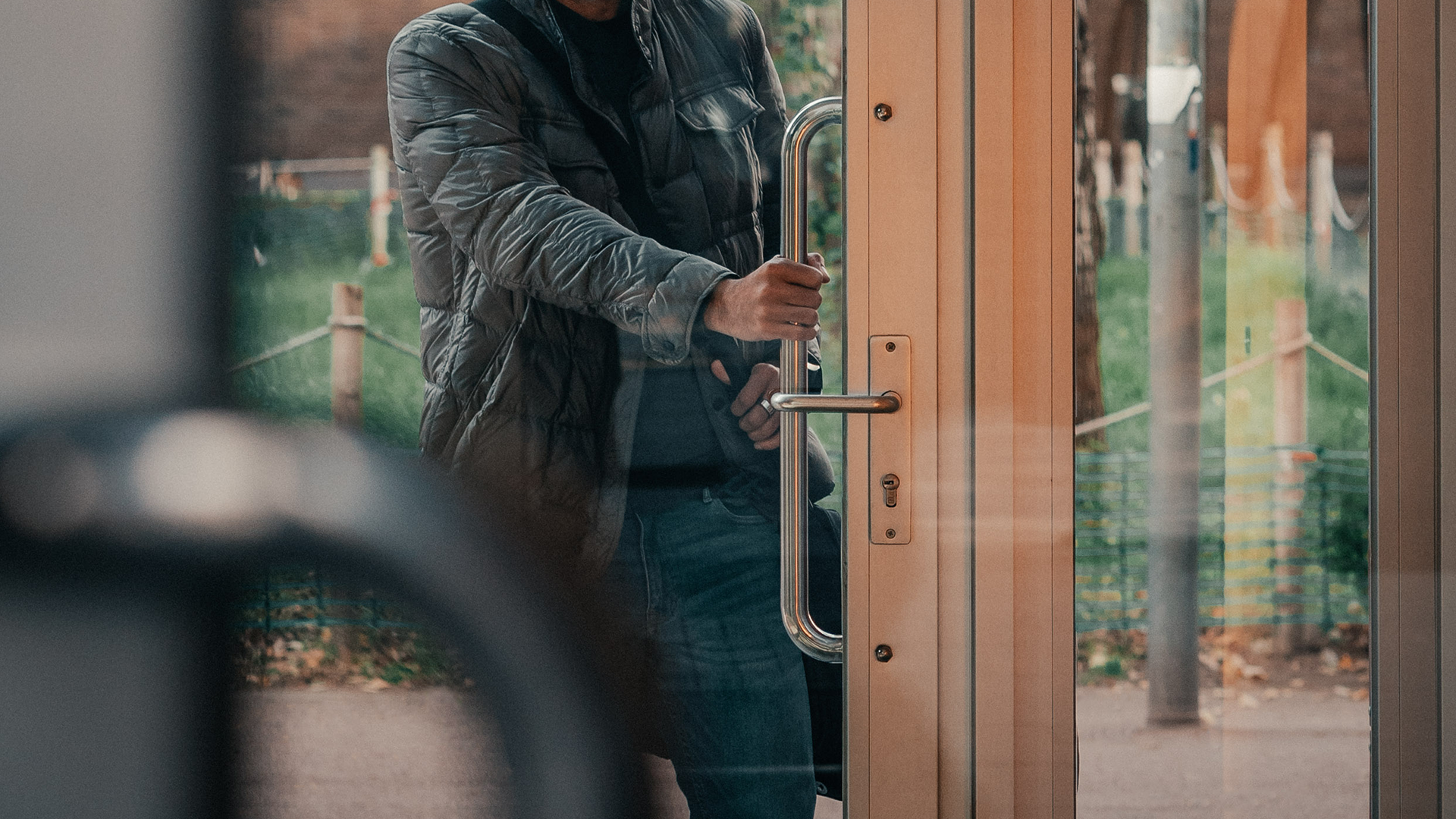Electric strikes are fundamental components in access control systems, as they allow or prevent the opening of a door using an electrical signal. They are classified based on their response to the activation signal, their security, and their additional functionalities.
At Openers & Closers , we understand that each access control system has specific requirements in terms of security, reliability, and functionality. Therefore, we develop a wide range of electric strikes that can be integrated into a wide variety of technical applications: from pedestrian access in residential and commercial environments to fire doors, emergency exits, and high-security automated installations.
Functions adapted to each project
Thanks to our modular approach, electric strikes from Openers & Closers can incorporate various functions that expand their capabilities and allow them to adapt to specific technical requirements.
Below we detail all the functions of our electric strikes, with some practical examples to help you choose.
Standard vs. Fail-safe: Which one do I choose?
When faced with a new project, the first key decision is to choose between a Fail-secure or a Fail-safe Fail-secure .
- Fail-secure or Fail-secure (Normally Closed) Function: A strike with a fail-safe function. Fail-secure It keeps the door locked without power and unlocks upon receiving an electrical impulse. This is the most common type and is considered negative security , since it remains closed without power. It is the usual option in offices, communities, or homes where access control is a priority.
- Reverse or Fail-safe function (Normally Open): A strike with a reverse function keeps the door locked when the power is disconnected and unlocks when the power is disconnected. It is considered positive safety , as the door remains closed when the power is applied. It is ideal for emergency doors or environments where a clear exit must be guaranteed in the event of a power failure .
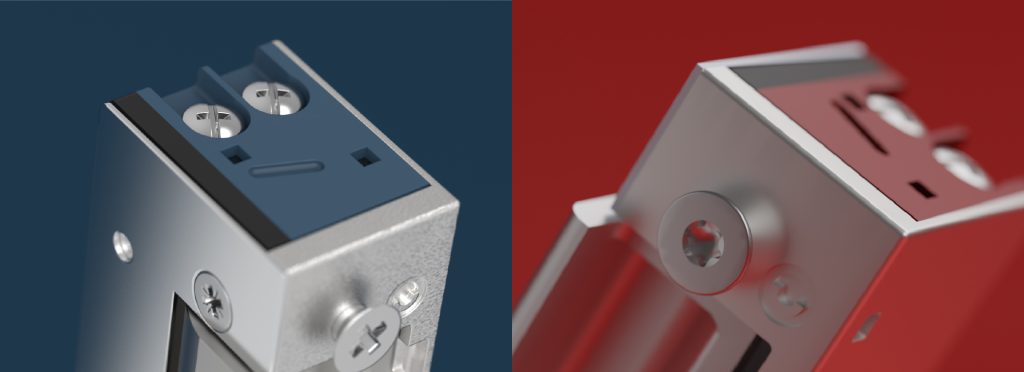
At Openers & Closers we differentiate the color of the strips of our electric strikes according to their function: blue for electric strikes with Fail-secure ; red for electric strikes with an inverse function.
Standard Strikes
- Function 0: Standard (Normally Closed) As we have already explained, a strike with a function Fail-secure It is unlocked when the coil is activated by an electrical impulse. This is the most basic type and is usually installed in residential buildings with a conventional intercom.
- Function 1: Standard with release lever Works the same as a strike plate Fail-secure , but includes a mechanical lever that allows manual opening. This type of lock is suitable for time-sensitive service doors, where the door must be kept open for a specific period of time.
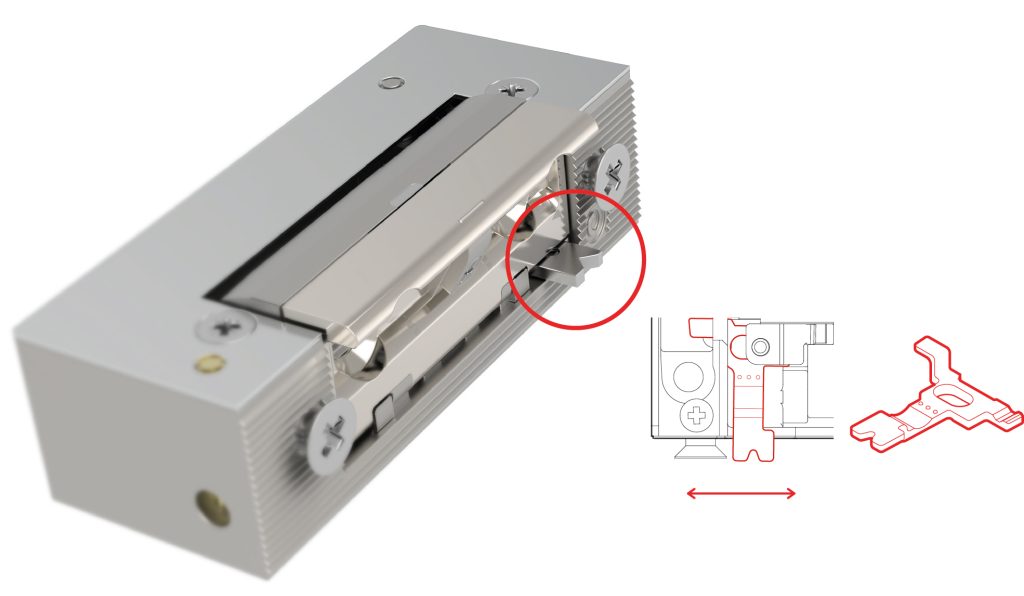
Unlock lever Openers & Closers .
It is worth noting that the release lever designed by Openers & Closers It's a completely innovative mechanism. Thanks to a lateral sliding system, the lock unlocks firmly and securely, improving its durability and extending its lifespan . Tests conducted in our laboratory have shown that it can exceed 500,000 opening and closing cycles without losing performance.
Automatic Strikes
These models allow unlocking with a single electrical impulse, remaining activated until the door has been opened.
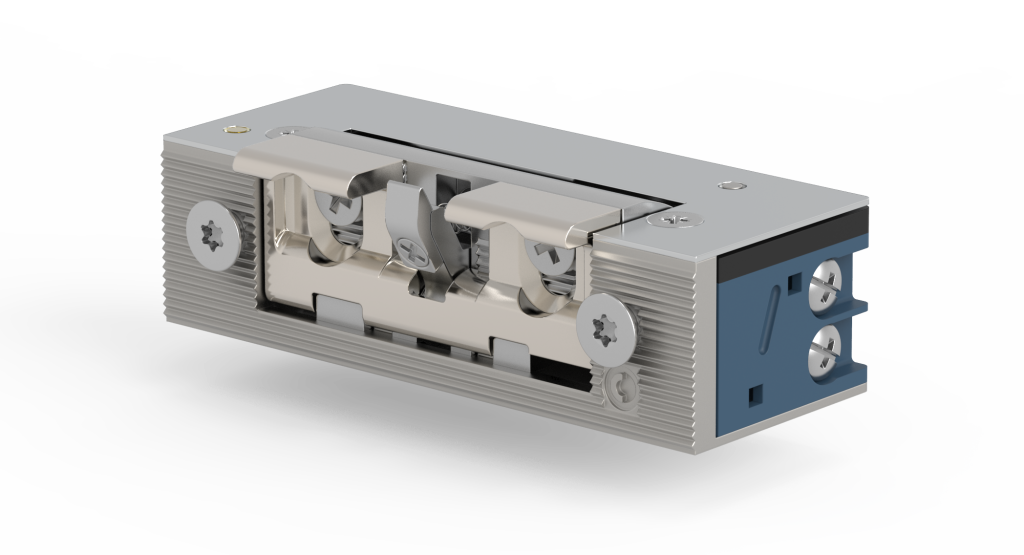
Example of an automatic strike. Thanks to the adjustable activation cam, the lock's deadbolt is guaranteed to work 100% of the time.
- Function 2: Automatic The strike is unlocked with an electric impulse and remains unlocked until the door is opened. This feature makes it the ideal choice for residential buildings, as it facilitates user access without having to keep the power on, ensuring the door remains open long enough to allow people to enter comfortably and safely.
- Function 3: Automatic with release lever Like the previous model, this lock remains unlocked until the door is opened , but it also incorporates the mechanical lever that allows manual opening at any time. It is a very useful option for installations such as offices with electronic access control , where the possibility of manual opening is also required for maintenance or security reasons .
- Function A: Internal Automatic Automatic models with internal mechanisms provide a higher level of security , since the system that controls the opening of the lock is completely housed inside the door, which prevents manipulation from the outside . They are especially recommended for doors with adjustment difficulties , since their electronic operation allows for more precise and stable unlocking management .
- Function B: Internal automatic with release lever Combines the advantages of the internal automatic with the option of mechanical opening.
Timed Strikes
The electric strikes Timed gates are a combination of comfort and security , as they allow fluid but controlled access during the exact time required .
- Function C: Automatic timed These models offer an extra level of security: the mechanism is unlocked for a predefined time according to the electrical impulse received and then automatically relocks , ensuring that the door is never left open. Its installation is suitable for accesses that require an extra level of security , such as internal doors in health centres or hospitals, where it is necessary to ensure both the ease of passage of workers and the security of the door remaining closed.
- Function D: Automatic timed release with release lever This version combines the advantages of timed release with the possibility of manual opening using a lever , thus offering a versatile and safe solution. It is particularly suitable for environments such as industrial installations , where it is essential to prevent doors from remaining open indefinitely, but at the same time the option of keeping them open temporarily during maintenance tasks or technical checks is required.
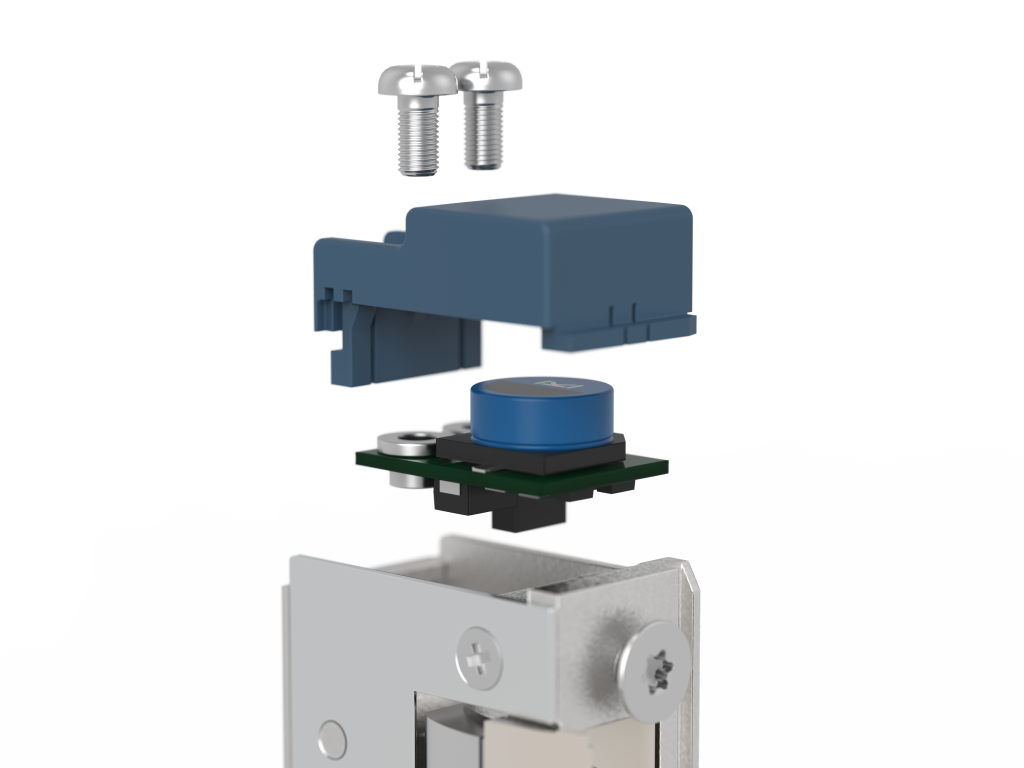
Detail of the timed module integrated into the strike.
Monitored Strikes
Door monitoring is a crucial system in security and access management . electric strikes Monitored systems incorporate one or more microswitches that allow the status of the door (whether it is open or closed) and the lock to be monitored in real time.
Monitoring is important for several reasons.
- Avoid false positives: A door may be physically closed but not electrically locked.
- Allows for secure automation: integrates with CCTV, alarms or BMS systems.
- They guarantee complete auditing and recording of the closure status.
- Function 6: Monitored Standard The function Fail-secure with monitoring, it is suitable for installations in buildings that require remote security , such as in public buildings, where both easy access and monitoring of each door are necessary.
- Function 7: Dual Monitored Standard This feature adds a second microswitch that also indicates whether the strike is locked or unlocked, thus increasing its functionality. Its installation is recommended in buildings requiring maximum security, such as banking and financial institutions, government or military headquarters, critical industrial facilities, etc.
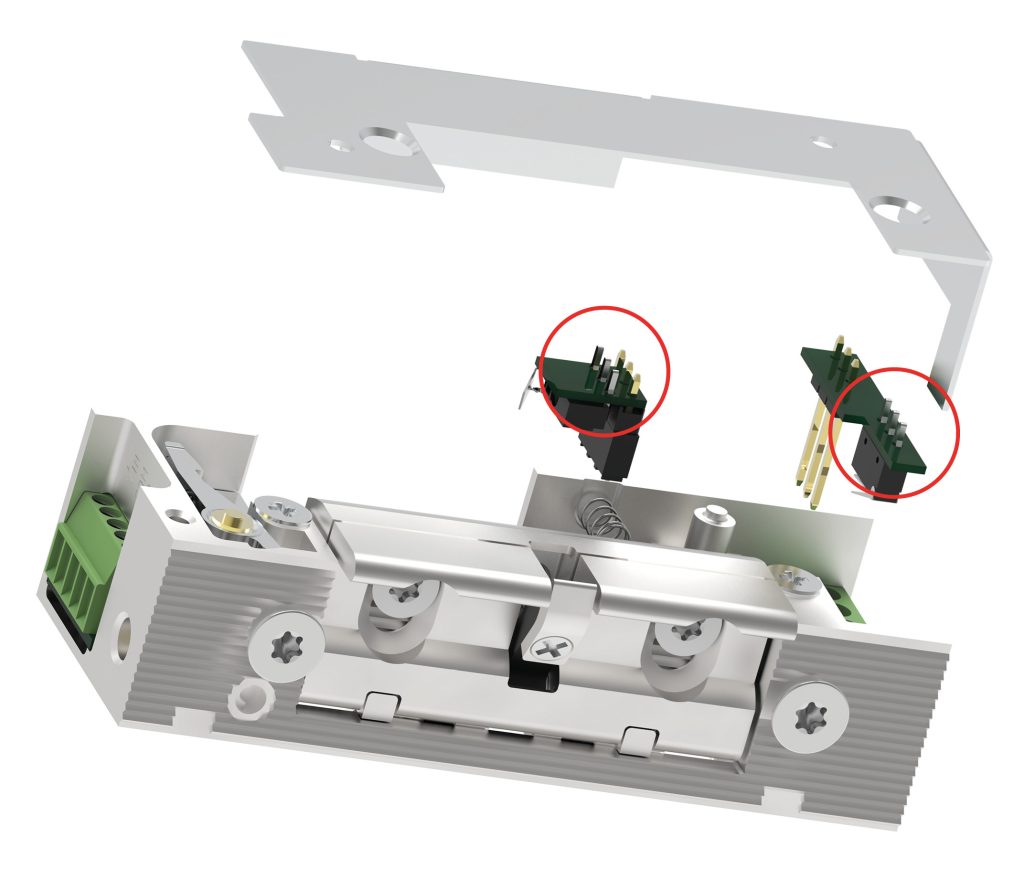
Detail of the microswitches on a dual-monitoring lock.
- Function M: Automatic monitoring These are the electric strikes Automatic doors that include a door status microswitch . They are typically installed in locations where high security is required and where there is a large influx of people, such as shopping malls or other busy buildings.
- Function N: Monitored automatic door with release lever This is the most complete version of the automatic model, as it includes both monitoring and an opening lever. It is suitable for locations where both monitoring the door status and being able to keep the door open manually for a limited time are required, such as for personnel to perform maintenance work.
Inverse Strikes
They are the electric strikes Designed for applications where positive safety is a priority: they remain locked when receiving electrical power and unlock when not receiving it.
- Function 4: Fail-safe This is the appropriate function for emergency exits or doors with high evacuation priority.
- Function 8: Monitored Fail-safe Like the previous model, this lock unlocks when the power is cut off , but it also includes an integrated microswitch that detects the door's status (open or closed) . It is an ideal solution for emergency exits connected to control or surveillance rooms , as it allows real-time monitoring of the access status .
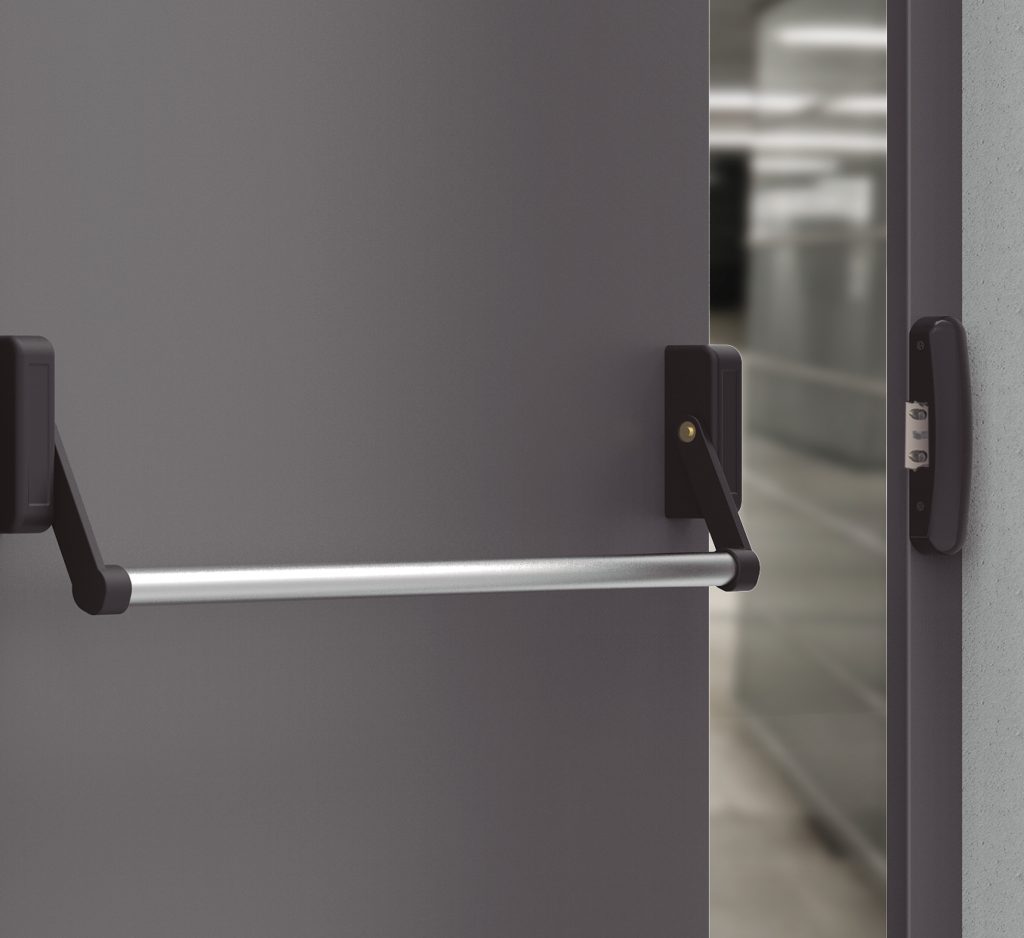
At emergency exits, positive safety is a priority to facilitate the exit of people.
Conclusion
The range of electric strikes Openers & Closers not only covers the most common needs, but also offers specific solutions for each type of installation . Thanks to the combination of electrical, manual, and monitoring functions, our products guarantee safety, reliability, and adaptability in any environment.
Do you have a specific project? Our technical team can help you choose the right function for each application.
Openers & Closers, opening doors to innovation.
